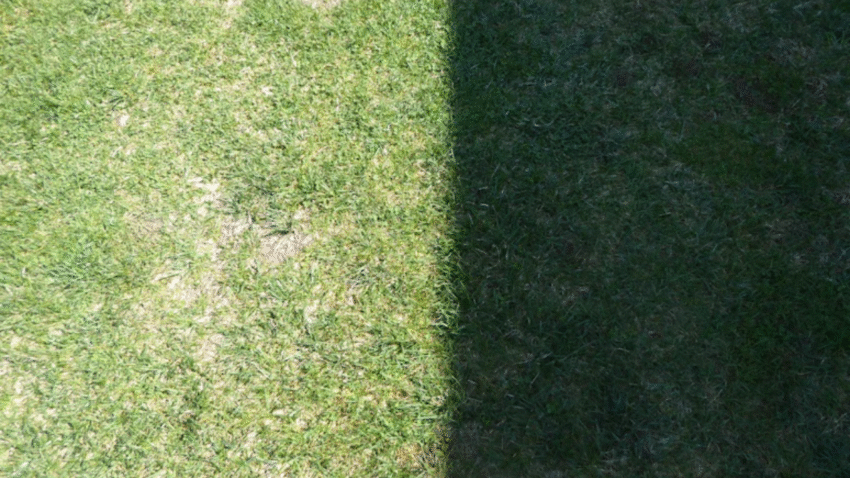Introduction
Tired of watching water — and your money — run down the street every time you water your lawn or it rains? Knowing how to stop water runoff on your lawn is essential for keeping your grass green, your soil healthy, and preventing erosion or flooding. This step-by-step guide will show you practical ways to improve your lawn’s ability to absorb and hold water so every drop works for your yard instead of washing away.
Why Preventing Water Runoff Matters for a Healthy Lawn
Runoff happens when water can’t soak into the soil quickly enough and instead flows over the surface. This wastes water, carries away valuable nutrients, erodes soil, and leaves parts of your lawn too dry or too soggy. Over time, it can create bare patches, encourage weeds, and even damage your home’s foundation if drainage is poor.
Fixing runoff helps your grass grow deeper roots, reduces your watering costs, and protects local waterways from fertilizer and pesticide runoff. The result? A healthier, more resilient lawn that stays lush even during dry spells.
Step-by-Step Guide to Stop Water Runoff on Your Lawn
Follow these simple steps to tackle runoff once and for all:
1. Test Your Soil’s Absorption
Start by figuring out how well your soil absorbs water.
- Use the garden hose test: Run a hose on one area for 15–20 minutes and observe. Does water pool or run off quickly? That’s a sign of compaction or poor drainage.
- Dig a small hole about 6 inches deep, fill it with water, and time how long it takes to drain. If it drains slower than 1 inch per hour, you likely have drainage issues.
2. Aerate Your Lawn
Soil compaction is one of the biggest causes of runoff. Aerate your lawn at least once a year to loosen up compacted soil and allow water to penetrate more easily. Core aerators remove small plugs of soil, creating channels for water, air, and nutrients to reach the root zone.
Spring or early fall are the best times to aerate for most grass types.
3. Improve Soil Structure With Organic Matter
Clay-heavy or sandy soils can struggle to hold the right amount of water. Add organic matter like compost or humus to improve soil texture:
- After aerating, top dress your lawn with a thin layer (¼–½ inch) of screened compost.
- Rake it into the holes so it reaches the root zone.
This helps your soil hold moisture evenly and reduces runoff during heavy rain or irrigation.
4. Mow High and Leave Clippings
Taller grass shades the soil, slows evaporation, and reduces runoff by encouraging deeper roots. Set your mower to the recommended height for your grass type — usually 3–4 inches.
Leaving grass clippings in place acts as a natural mulch, adding organic matter back into the soil.
5. Water Deeply and Slowly
Runoff often happens when you water too fast. Water your lawn slowly and deeply so it can soak in:
- Use sprinklers that deliver large droplets close to the ground rather than fine mists that blow away.
- Try the “cycle and soak” method: Water for 10–15 minutes, then let it absorb for an hour before watering again. Repeat until you reach about 1 inch of water per week, including rainfall.
6. Create Rain Gardens or Swales
If runoff tends to pool in certain areas, redirect excess water naturally:
- Plant a rain garden — a shallow, planted depression that captures runoff and lets it slowly infiltrate.
- Build shallow swales or berms to guide water away from low spots and allow it to spread out and soak in.
Native plants with deep root systems are ideal for absorbing water and preventing erosion.
7. Install Permeable Pathways
Impervious surfaces like concrete driveways, patios, or compacted walkways increase runoff. Replace or break up hard surfaces with:
- Gravel paths
- Paver stones with sand or grass gaps
- Permeable pavers that let water seep through
These allow water to reach the soil below instead of running off into storm drains.
8. Use Proper Grading and Drainage
Your lawn should slope away from your house foundation at a gentle grade — ideally about 2–5% slope — to direct water away from structures.
If you have persistent drainage problems, you may need to install French drains or dry wells to move excess water safely underground.
Common Mistakes to Avoid
Mistake 1: Overwatering or Watering Too Quickly
Solution: Use the cycle and soak method or drip irrigation to give your soil time to absorb water.
Mistake 2: Skipping Aeration
Solution: Compact soil can’t absorb water well. Aerate at least once a year to keep the soil open.
Mistake 3: Leaving Bare Spots Exposed
Solution: Bare soil erodes easily and sheds water. Overseed thin areas to keep grass thick and roots strong.
Mistake 4: Ignoring Downspout Placement
Solution: Ensure downspouts direct water away from your lawn’s problem spots. Extend downspouts or add splash blocks if needed.
Mistake 5: Relying on Hard Surfaces
Solution: Replace solid patios or paths with permeable materials whenever possible.
Extra Lawn Care Tips & Hacks
✅ Add Mulch Beds Around Trees and Gardens: Mulch slows down water and helps it soak in where it’s needed.
✅ Plant Deep-Rooted Native Plants: Native grasses and perennials naturally reduce runoff and require less maintenance.
✅ Check Your Sprinklers: Adjust heads to water only your lawn — not sidewalks, driveways, or streets.
👉 Don’t miss our guide on “How to Aerate Your Lawn for Better Soil Health” — the perfect starting point to fix compaction and runoff!
Conclusion
Water runoff doesn’t have to wash away your time, money, or green grass. By understanding how to stop water runoff on your lawn, you can build healthier soil, improve drainage, and make the most of every drop.
Bookmark this guide and put these steps into action — your lawn, your wallet, and your local watershed will all thank you for it.
